Cheesecake Recipe With 2 Bricks of Cream Cheese
This post may contain affiliate links. As an Amazon Associate I earn from qualifying purchases. Please read my disclosure policy.

Today I'm so excited to show you how to make the bestCheesecake Recipe of your life. Simple, classic, andno water bath required!! The texture is smooth, rich, and creamy, served over a crisp homemade graham cracker crust.
I've included tons of detailed tips and important info in today's post so you can make the perfect creamy cheesecake every time. For a visual how-to, be sure to check out my step-by-step video beneath the recipe!
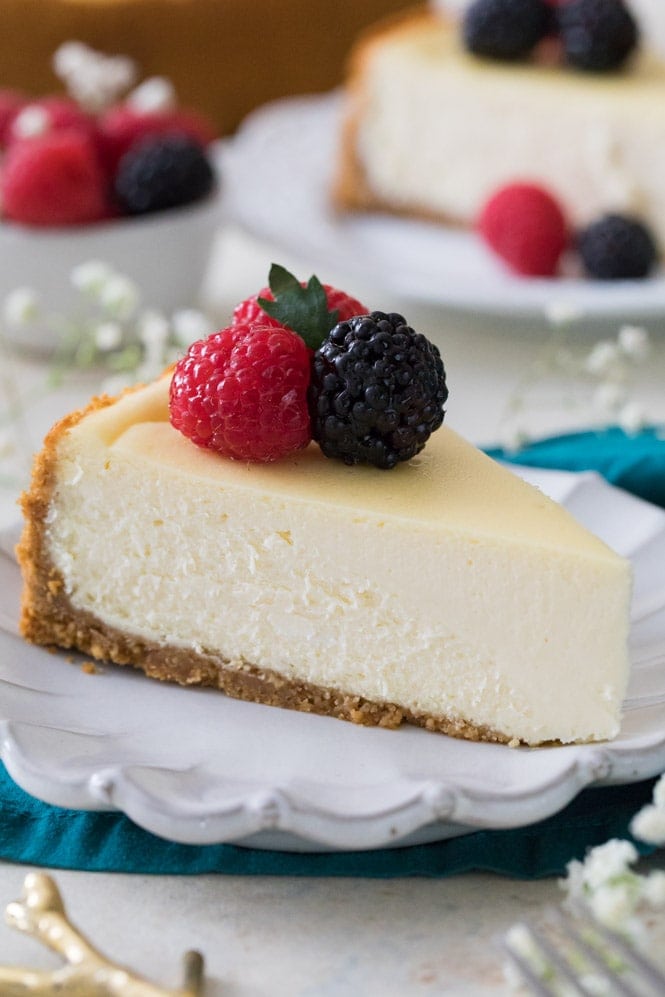
The Perfect Cheesecake Recipe
This cheesecake recipe has been a long time coming.
For a recipe with so few ingredients (cream cheese, eggs, sugar, sour cream, vanilla & salt), it took a lot longer than you might think to develop theperfect version. I've shared a few cheesecake variations in the past, including my No-Bake Cheesecake, but getting a perfected classic version took lots of testing. Finally, here we are.
Oh, and we are skipping the water bath! I've always found them to be largely unnecessary with cheesecakes. Cook yours on a low temperature and follow my tips below and you'll have a perfectly creamy and crack-less cheesecake without all the hassle of a water bath.
O ther tested/perfected classics to try: my Pound Cake, Chocolate Cake, and Carrot Cake, (to name just a handful).
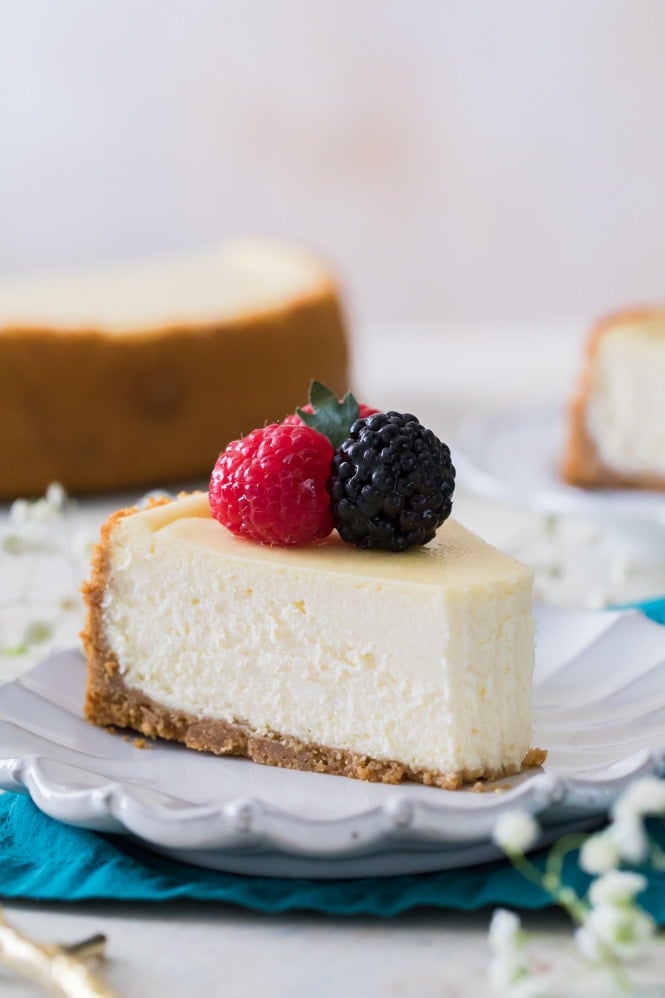
Must-Know Tips for Baking the Perfect Cheesecake (Without a Water Bath!)
Use room temperature ingredients
It's important that your cream cheese comes to room temperature before you begin making your cheesecake. This will prevent any lumps and ensure a cheesecake with a smooth, creamy texture. However, to ensure thatallof your ingredients blend together nicely and give you the desired result, they should all be at room temperature before you begin.
Take it easy on the eggs
Over-beating your eggs is one of the quickest ways to ruin a cheesecake. Over-beating can ruin the texture and can cause cracks. To prevent this, lightly scramble each egg before adding it into your batter. Keep your mixer on low speed and stir untiljust combined. Be sure to pause after each addition and scrape down the sides and bottom of your mixing bowl.
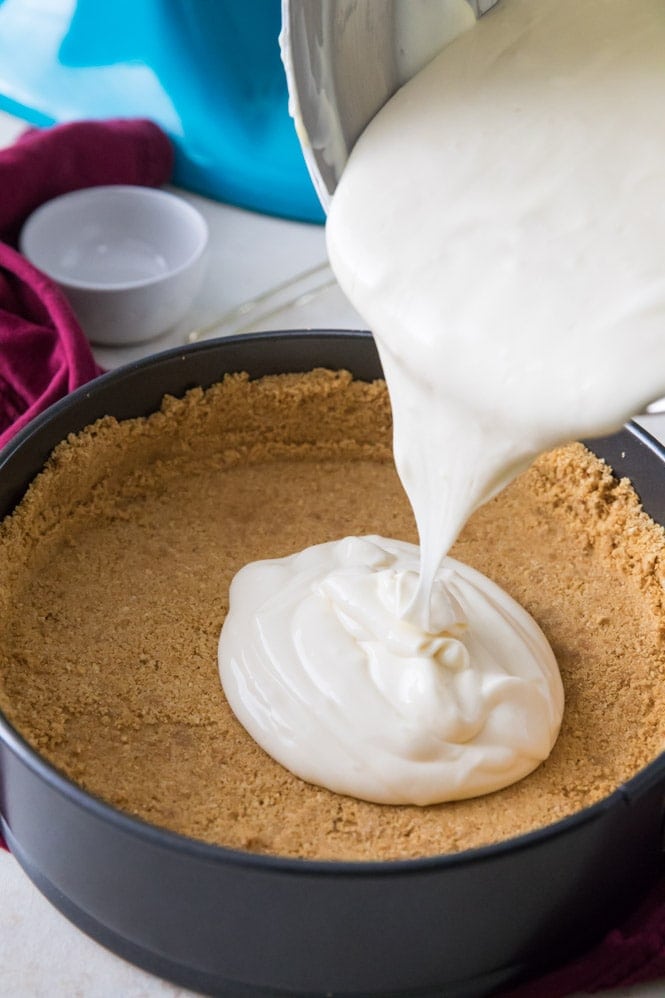
Don't open the oven!
I know how tempting it can be to want to check on your perfect, beautiful cheesecake, but wait until it's finished baking (or close to it) before opening the oven door! Yes, you will have to test for doneness at some point and there's a real possibility it will need more time in the oven, but minimize opening the oven as much as possible.
Opening the oven door can drastically reduce the temperature of your oven, which will slow the baking process and might cause your cheesecake to sink or crack.
Free your crust!
Once your cheesecake is done baking, allow it to cool for 10 minutes on top of the stove. Then, run a knife around the inside of the springform pan to loosen the crust from the sides.
As your cheesecake cools, it may to shrink a bit. If the crust is stuck to the pan, your crust won't give but your cheesecake will (leaving you with cracks). Free the crust from the sides so it can contract with your filling as needed.
Cool at room temperature before moving to the fridge
I always let my cheesecake come to room temperature before chilling. For bests results, let it cool as gradually as possible. I put mine on top of my oven (the warmest spot in my house) so it can gradually cool off as the oven does.
This pre-chilling cooling period can take an hour or two, but it's worth it. An abrupt temperature change (moving the cheesecake directly from oven to fridge) is likely to make it crack.
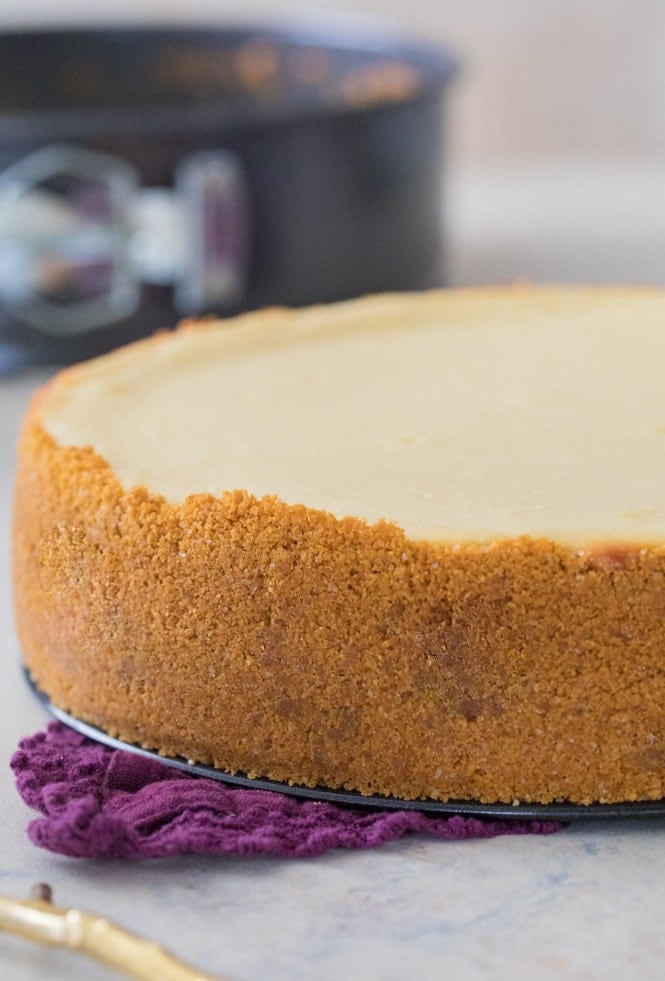
How to Store Cheesecake
Cheesecake should always be stored chilled in the refrigerator. When I'm ready to store mine, I'll usually replace the springform ring and then cover the top with foil.
Cheesecake shouldn't be left out at room temperature for more than 4 hours (or less if it's particularly hot/humid!).
Can I Freeze Cheesecake?
Yes, you can freeze your cheesecake! Fortunately, this cheesecake recipe actually freezes very well. To freeze, first allow your cheesecake to cool on the stovetop and in the fridge as instructed. Once it's chilled, you can freeze by wrapping thoroughly in plastic wrap and then wrapping in foil. Cheesecake will keep in the freezer for several months.
To thaw, transfer to the fridge and let it thaw there overnight.
Here's a great source for more information on freezing cheesecake, including suggestions if you'd like to freeze by the slice.
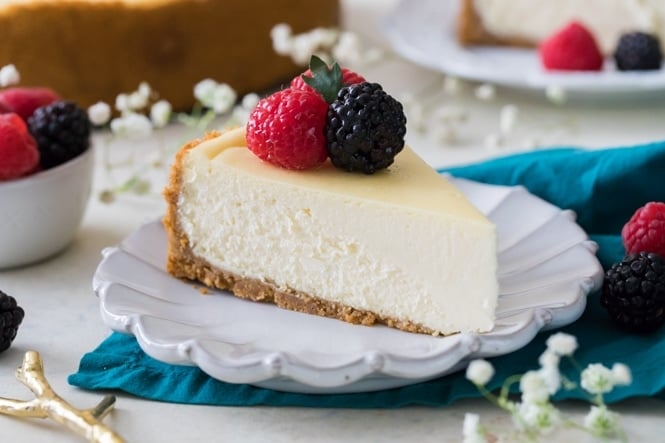
Other Cheesecake Variations You Might Like:
- Oreo Cheesecake
- Pumpkin Cheesecake
- Chocolate Cheesecake
- Or try something different and serve this cheesecake on an Oreo Crust!
Enjoy!
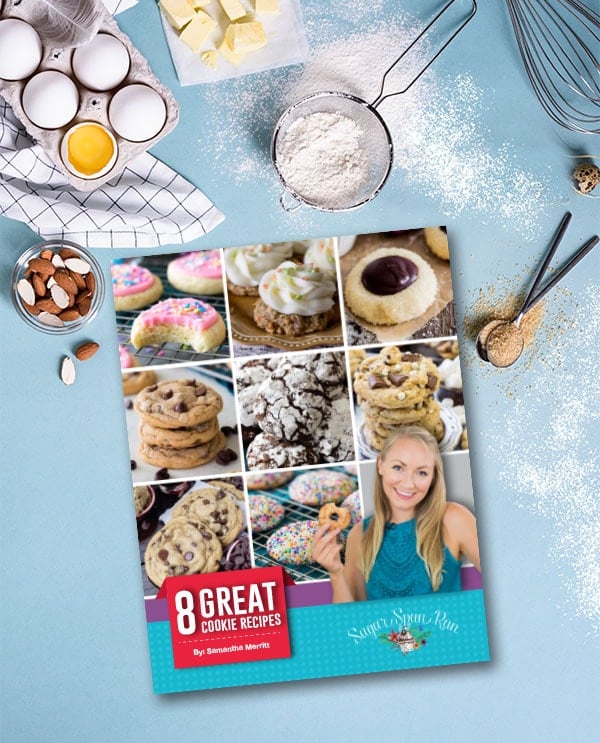
Treat yourself to a FREE E-BOOK!
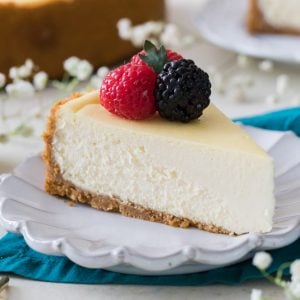
Graham Cracker Crust¹
- 1 ½ cups graham cracker crumbs (170g)
- 2 Tablespoons sugar
- 1 Tablespoon brown sugar (can substitute white)
- 7 Tablespoons butter melted
Cheesecake
- 32 oz cream cheese² softened to room temperature (910g)
- 1 cup sugar (200g)
- ⅔ cups sour cream (160g)
- 1 ½ teaspoons vanilla extract
- ⅛ teaspoon salt
- 4 large eggs room temperature, lightly beaten
Prevent your screen from going dark
-
Preheat oven to 325F (160C).
-
Prepare Graham Cracker crust first by combining graham cracker crumbs, sugar, and brown sugar, and stirring well. Add melted butter and use a fork to combine ingredients well.
-
Pour crumbs into a 9" Springform pan and press firmly into the bottom and up the sides of your pan. Set aside.
Cheesecake
-
In the bowl of a stand mixer or in a large bowl (using a hand mixer) add cream cheese and stir until smooth and creamy (don't over-beat or you'll incorporate too much air).
-
Add sugar and stir again until creamy.
-
Add sour cream, vanilla extract, and salt, and stir until well-combined. If using a stand mixer, make sure you pause periodically to scrape the sides and bottom of the bowl with a spatula so that all ingredients are evenly incorporated.
-
With mixer on low speed, gradually add lightly beaten eggs, one at a time, stirring just until each egg is just incorporated. Once all eggs have been added, use a spatula to scrape the sides and bottom of the bowl again and make sure all ingredients are well combined.
-
Pour cheesecake batter into prepared springform pan. To insure against leaks, place pan on a cookie sheet that's been lined with foil.
-
Transfer to the center rack of your oven and bake on 325F (160C) for about 75 minutes. Edges will likely have slightly puffed and may have just begun to turn a light golden brown and the center should spring back to the touch but will still be Jello-jiggly. Don't over-bake or the texture will suffer, which means we all suffer.
-
Remove from oven and allow to cool on top of the oven³ for 10 minutes. Once 10 minutes has passed, use a knife to gently loosen the crust from the inside of the springform pan (this will help prevent cracks as your cheesecake cools and shrinks).
-
Allow cheesecake to cool another 1-2 hours or until near room temperature before transferring to refrigerator and allowing to cool overnight or at least 6 hours. Enjoy!
I have not tested this recipe in a convection oven.
1) For more details on making this crust or to use whole graham crackers, please see my Graham Cracker Crust Recipe.
2) Make sure that you use the brick-style cream cheese, not the spreadable version that is available in tubs.
3) I recommend the top of the oven because it is usually the warmest place in my house (after it's been on for over an hour). This will help to cool the cheesecake more gradually and will also help avoid cracks).
Serving: 1 slice | Calories: 500 kcal | Carbohydrates: 32 g | Protein: 8 g | Fat: 36 g | Saturated Fat: 22 g | Polyunsaturated Fat: 1 g | Monounsaturated Fat: 3 g | Cholesterol: 179 mg | Sodium: 450 mg | Potassium: 45 mg | Fiber: 1 g | Sugar: 24 g | Vitamin A: 1200 IU | Calcium: 80 mg | Iron: 0.9 mg
Cheesecake Recipe With 2 Bricks of Cream Cheese
Source: https://sugarspunrun.com/best-cheesecake-recipe/